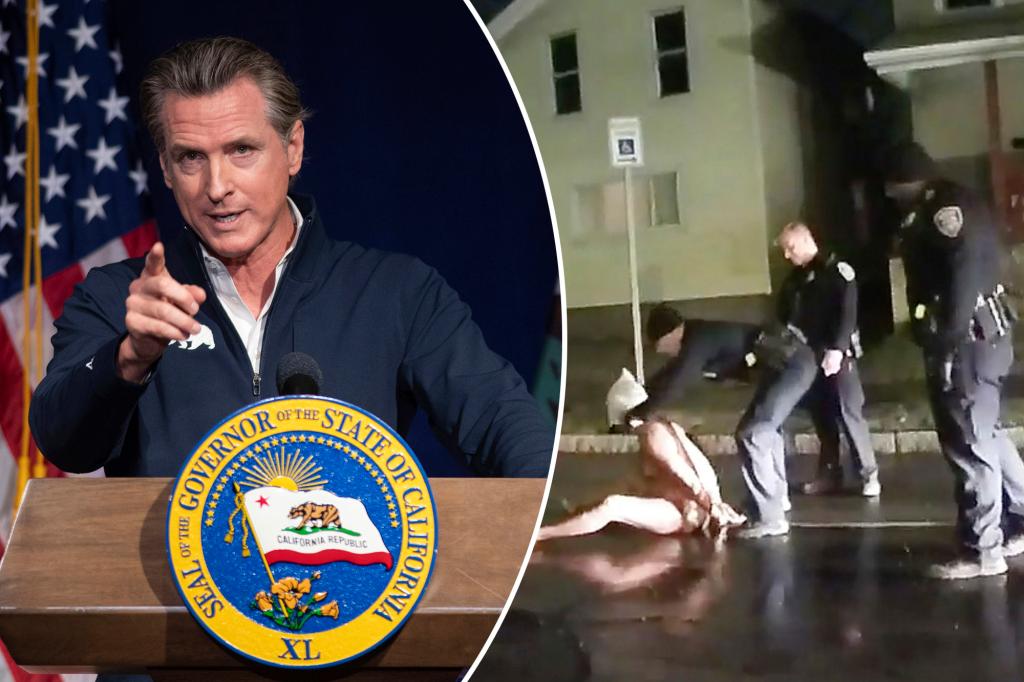This week, California became the first US state to ban the term “excited delirium” as an official cause of death.
A growing number of doctors and medical associations have distanced themselves from using it as a diagnosis, stating that it has no scientific or medical validity.
Additionally, the term has been used most frequently to describe the deaths of men and women of color, adding a racial element to the controversial diagnosis.
“The only place this term is continually used is to describe deaths that occur in police custody,” California Assemblyman Mike Gipson, who sponsored the bill banning the term, said in a news release.
“From the beginning, this terminology has been disproportionately applied to communities of color and has only been used in specific contexts related to encounters with law enforcement,” Gipson added.
California Governor Gavin Newsom signed the bill into law on Sunday, October 8.
What is excited delirium?
Excited delirium is a loosely defined term that describes symptoms including aggressive behavior, high pain tolerance, extreme agitation, and emotional distress.
California Governor Gavin Newsom this week signed a bill banning the use of “excited delirium” as an official cause of death.
The diagnosis appeared on death certificates, police records and forensic reports during the crack epidemic of the 1980s, according to a report by Physicians for Human Rights. Soon, the term was used as a catch-all term for deaths that occurred in the context of police restraints, often coinciding with substance use or mental illness.
In 2009, the American College of Emergency Physicians (ACEP) had endorsed excited delirium as a legitimate cause of death.
The term was adopted in police training manuals and promoted at conferences of forensic doctors and police chiefs, the Physicians for Human Rights report also notes.
Is excited delirium real?
Despite widespread support and use, excited delirium was never recognized by psychiatrists or other mental health experts.
“Excited delirium is not a reliable, independent medical or psychiatric diagnosis,” Gipson said.
“There are no diagnostic guidelines and it is not recognized in the DSM-5 [Diagnostic and Statistical Manual of Mental Disorders, Fifth Edition], which is the main diagnostic guide for mental health providers,” he added. “Neither the American Medical Association nor the American Psychiatric Association recognize this term as a legitimate diagnosis.”
In fact, the AMA and APA never recognized “excited delirium” as an actual syndrome, and critics have repeatedly called it unscientific and rooted in racism.
 This image shows a Rochester, New York, police officer placing a hood over Daniel Prude’s head. Prude died after police restrained him and he subsequently stopped breathing.AP
This image shows a Rochester, New York, police officer placing a hood over Daniel Prude’s head. Prude died after police restrained him and he subsequently stopped breathing.AP
Abuse of the term
“Excited delirium is often used when there is a death associated with a physical altercation between a citizen and authorities,” Dr. Roger A. Mitchell Jr., chairman of the pathology department at Howard University in Washington, told the Associated Press. , DC.
“It’s not a real explanation for the death,” Mitchell added.
In recent years, the term has emerged as an explanation for the deaths of blacks, Latinos and others at the hands of white police officers.
In 2021, excited delirium was cited in the death of Daniel Prude, a 41-year-old black man in Rochester, New York. A grand jury rejected charges against police officers in that case.
Excited delirium resurfaced in the 2021 trial of former Minneapolis police officer Derek Chauvin, who was later convicted in the death of George Floyd. And the term has resurfaced in the ongoing trials of police officers charged in the deaths of Elijah McClain in Colorado and Manuel Ellis in Washington state.
“In 2020, Angelo Quinto, a Filipino-American Navy veteran facing a mental health crisis, stopped breathing while two police officers knelt on his back and neck. Mr. Quinto’s official cause of death was determined to be excited delirium,” Gipson said. “That is absolutely absurd.”
Excited delirium declared obsolete
In March of this year, the National Association of Medical Examiners spoke out against the controversial term and stated that “excited delirium” or “excited delirium syndrome” should not be used as a cause of death.
And yesterday, ACEP formally rejected any use of excited delirium as a legitimate diagnosis. calling its 2009 endorsement obsolete.
“This means that if someone dies while in custody… people can’t point to excited delirium as the reason and they can’t point to ACEP’s endorsement of the concept to bolster their case,” said Dr. Brooks Walsh, Connecticut emergency doctor. he told the Associated Press.
Dr. Joyce deJong, president of the National Association of Medical Examiners, said the group’s denial of excited delirium arose from concerns that the phrase could be used to justify excessive force by police.
“Anything we can do to prevent the perpetuation of a phrase that could be causing harm,” said deJong, Michigan’s medical examiner.
Categories: Trending
Source: vtt.edu.vn
